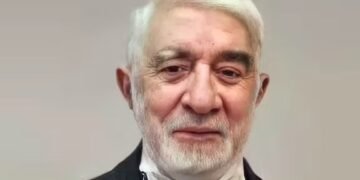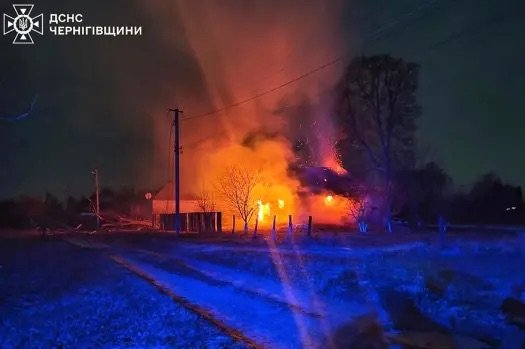KYIV, Ukraine — On Friday, Russia launched a massive aerial assault on Ukraine, targeting critical infrastructure with 93 cruise and ballistic missiles as well as nearly 200 drones, according to Ukrainian President Volodymyr Zelenskyy. He described the attack as one of the most intense on Ukraine’s energy sector since the full-scale invasion began almost three years ago.
Ukrainian air defenses intercepted 81 missiles, including 11 cruise missiles shot down by F-16 fighter jets provided by Western allies earlier this year, Zelenskyy said.
“These assaults terrorize millions,” Zelenskyy stated on his Telegram channel, reiterating his call for global solidarity against Russian President Vladimir Putin. “The world must respond decisively: a massive strike and a unified reaction are the only ways to end this terror.”
As uncertainty looms over the trajectory of the war in the coming year, U.S. President-elect Donald Trump, who will take office next month, has pledged to end the conflict. However, his stance has cast doubt on whether the United States will continue its critical military support for Kyiv.
In Moscow, the Russian Defense Ministry said the strikes targeted “critically important fuel and energy facilities in Ukraine that ensure the functioning of its military-industrial complex.” The ministry framed the assault as retaliation for Ukraine’s recent use of U.S.-supplied Army Tactical Missile Systems (ATACMs) to attack a Russian air base.
Trump, in an interview with TIME magazine on Thursday, expressed opposition to Ukraine using U.S.-provided weapons to strike targets on Russian soil. The Kremlin welcomed Trump’s position, with spokesman Dmitry Peskov calling it aligned with Russia’s perspective. “Trump understands what escalates the conflict, and that is positive,” Peskov told reporters.
Friday’s attack also targeted transportation networks and other vital facilities, according to the U.S. Embassy in Kyiv. Ukraine’s largest private energy company, DTEK, reported severe damage to several thermal power plants.
Russia’s strategy has repeatedly focused on crippling Ukraine’s power grid, aiming to demoralize civilians enduring blackouts, lack of water, and freezing conditions while disrupting the country’s defense production capabilities.
Ukrainian Energy Minister Herman Halushchenko commended energy workers for their efforts to stabilize the grid, pledging to provide more details on the damage once security conditions permitted.
Ukraine’s air force reported that Russia began the overnight attack with swarms of drones, followed by waves of cruise missiles. The assault also included air-launched Kinzhal ballistic missiles aimed at western regions.
A similar large-scale strike on November 28 involved approximately 200 missiles and drones, leaving over a million households without power until emergency crews restored services. Ukrainian officials have cautioned that Russia appears to be stockpiling missiles for future attacks.
On November 21, Russia used an intermediate-range hypersonic Oreshnik ballistic missile for the first time to strike an industrial site in Dnipro. Putin described the attack as retaliation for Ukrainian strikes on Russian territory using Western-supplied long-range weapons. He warned that further strikes using the new missile could follow.
Although no Oreshnik missiles were reported in Friday’s assault, U.S. officials have expressed concerns about their potential use in the coming days.
Approximately half of Ukraine’s energy infrastructure has been destroyed since the war began, with rolling blackouts now a persistent challenge. Despite receiving advanced air defense systems from Western allies, Ukraine continues to face difficulties in countering Russia’s tactics of overwhelming air defenses with combined missile and drone swarms.
Russia has maintained the offensive initiative this year, slowly advancing through Ukrainian defenses in the east in a series of grinding offensives.

 English
English






































